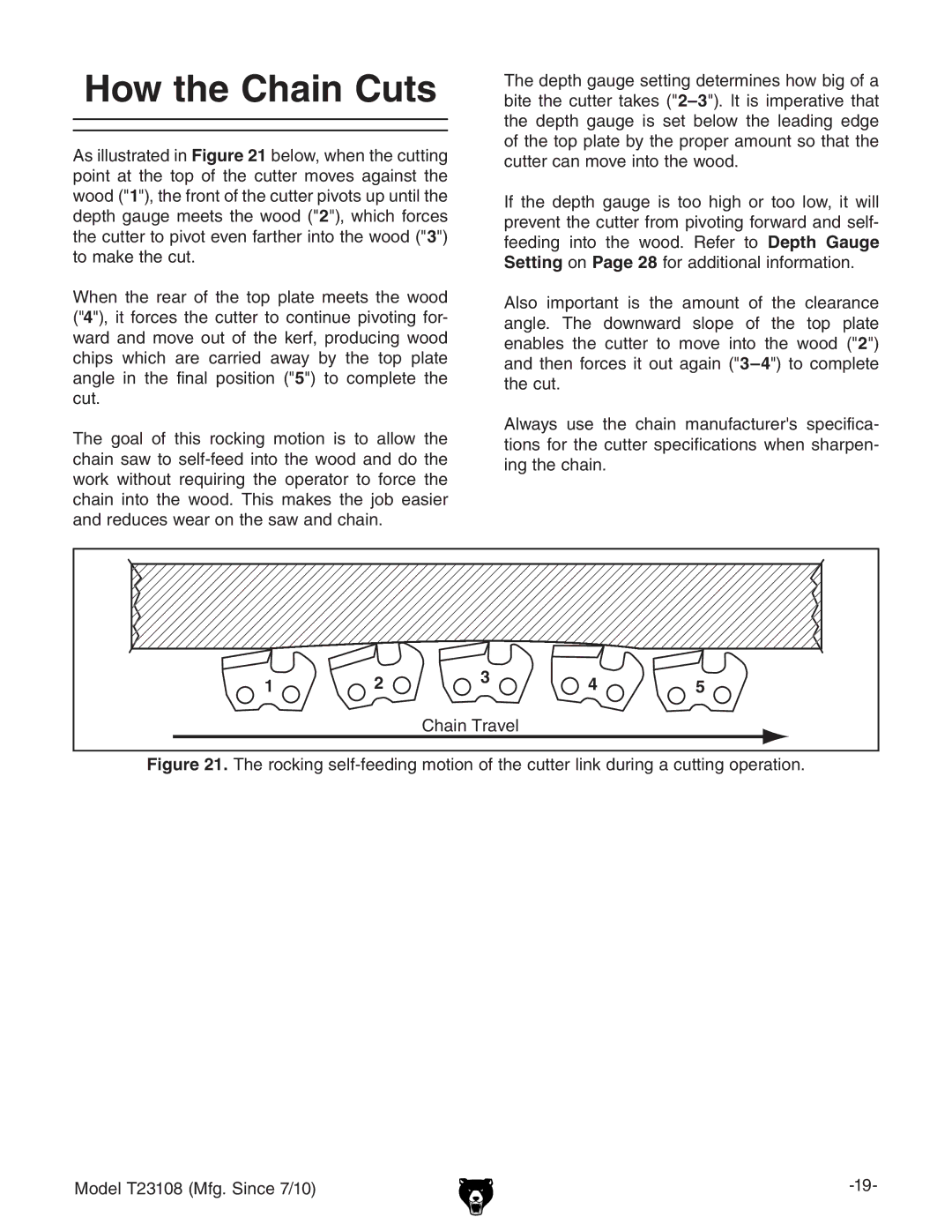T23108 specifications
Grizzly T23108 is a powerful and versatile woodworking tool designed to meet the needs of both professional woodworkers and hobbyists alike. As a table saw, it combines precision, safety, and ease-of-use, ensuring that users can execute a variety of cutting tasks with confidence and accuracy.One of the standout features of the Grizzly T23108 is its robust construction. Built with a sturdy cast iron tabletop, it provides stability and reduces vibrations during operation, ensuring cleaner cuts and enhancing the overall durability of the saw. The table measures a generous size, allowing for larger workpieces to be handled with ease.
The T23108 is equipped with a powerful 2 HP motor that delivers impressive performance, making it suitable for cutting hardwood and other dense materials. The motor is designed to provide consistent power, even under heavy loads, ensuring that users can tackle tough tasks without the tool bogging down.
Safety is a top priority in the design of the Grizzly T23108. It features a high-quality blade guard that protects the user from accidental contact with the saw blade while cutting, and it includes riving knife technology. This feature helps to prevent kickback, a common hazard with table saws, by allowing the blade to remain aligned with the workpiece during cuts. Additionally, the saw boasts an easy-to-use emergency stop switch that can quickly disconnect power in case of an emergency.
Another key technological feature of the Grizzly T23108 is its adjustable fence system. The rip fence is easy to adjust, ensuring that users can achieve precise measurements and straight cuts consistently. The fence locks securely in place, giving users the confidence that their settings will remain accurate throughout the cutting process.
The saw also offers versatility with its capability to perform various cuts, including crosscuts and bevel cuts, thanks to its tilting blade mechanism. This adaptability makes the Grizzly T23108 an excellent choice for a range of woodworking projects, from simple DIY tasks to complex furniture building.
Overall, the Grizzly T23108 is an exceptional table saw that delivers on performance, safety, and versatility. Its superior build quality, powerful motor, and advanced safety features make it a reliable choice for anyone looking to invest in a high-quality woodworking tool. Whether you are a seasoned professional or just starting in woodworking, the Grizzly T23108 can enhance your workshop and help you achieve your crafting goals with efficiency and precision.

